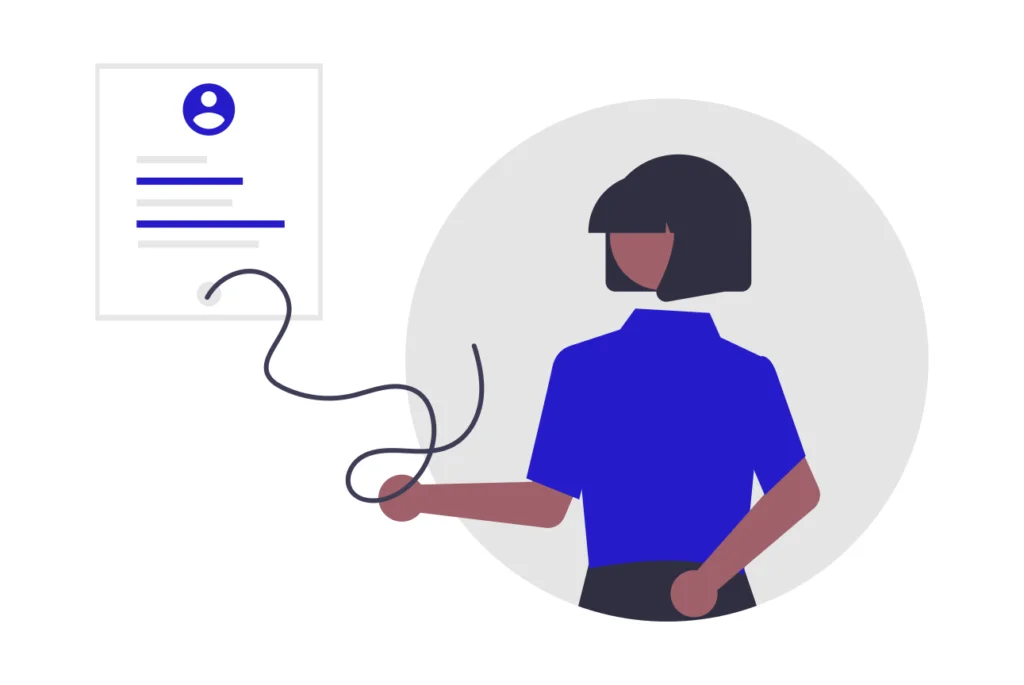Get a consumer loan today
Personal loans Sweden
Free, 100% digital personal loan comparison
Save money with lower interest rates
Instant answers from up to 39 Swedish lenders
Loan example: Annuity loan 12 years, amount 400,000 SEK, variable interest rate 7.99%, arrangement cost 400 SEK, avi fee 20 SEK, gives an effective interest rate of 8.41%. Total amount to be repaid 626,457 SEK, divided into 144 repayments, gives a monthly cost of 4,348 SEK. Repayment period 1-20 years. Maximum interest rate is 22.00%. Interest rate range between: 4.50 – 22.00%. Updated 2025-08-15.
Borrowing costs money.
If you are unable to repay your debt on time, you risk getting a payment default. This can make it harder to rent a home, sign contracts, or obtain new loans. For support, contact the municipal budget and debt counselling service. You can find contact information at konsumentverket.se.
In Sweden, personal loans provide a convenient way for individuals to finance personal needs, such as debt consolidation, significant purchases, or unexpected expenses. These loans are unsecured, meaning they require no collateral, and offer fixed interest rates and clear repayment terms.
What is a personal loan?
A personal loan in Sweden is an unsecured financial instrument that provides borrowers with a lump sum of money upfront. This amount is then repaid over a predefined period through consistent monthly installments.
Unlike secured loans, personal loans don’t necessitate collateral, such as real estate or a vehicle. Borrowers benefit from the predictability of fixed interest rates, ensuring their monthly payments remain constant.
Personal loans are versatile, allowing for a range of uses, including consolidating existing debts, funding home renovations, or addressing unforeseen financial demands. The terms, including the loan amount, interest rate, and repayment schedule, are influenced by the borrower’s creditworthiness and the lender’s specific conditions.

Example of a personal loan
| Parameter | Detail |
|---|---|
| Term | 12 years |
| Loan Amount | 400,000 SEK |
| Interest Rate | Variable, 8.99% |
| Setup Fee | 400 SEK |
| Monthly Administration Fee | 20 SEK |
| Effective Interest Rate | 9.49% |
| Total Repayment Amount | 658,461 SEK |
| Monthly Payment | 4,570 SEK |
| Repayment Period | 1-20 years |
| Maximum Interest Rate | 33.46% |
| Interest Rate Range | 5.07% – 33.46% |
Loan Type and Term: Personal loans often come with a fixed duration during which the borrower is required to repay the loan. This term is set at the outset and affects the monthly payment amount and the total interest paid over the life of the loan.
Loan Amount: This is the sum borrowed from the lender, which the borrower agrees to repay over the loan term, along with interest and any applicable fees.
Interest Rate: The cost of borrowing is represented as the interest rate, which can be fixed or variable. A fixed rate remains constant throughout the loan term, while a variable rate can change, reflecting shifts in the broader financial market.
Fees: Loans may include various fees, such as an origination or setup fee and monthly administration fees. These contribute to the total cost of the loan.
Effective Interest Rate: This rate provides a more comprehensive view of the loan’s cost as it includes the interest rate and any fees associated with the loan, presented as an annual percentage.
Total Repayment Amount: This figure represents the sum of all payments made by the end of the loan term, including the principal, interest, and fees.
Monthly Payment: The amount the borrower needs to pay the lender each month. This payment typically combines principal and interest.
Repayment Period: This specifies the range within which the borrower must repay the loan. It sets the minimum and maximum time allowed for repayment.
Interest Rate Range: Lenders provide a range showing the minimum and maximum interest rates they offer. The rate a borrower receives will depend on their creditworthiness and the loan’s terms.
How to Apply For a Personal Loan
Applying for a personal loan in Sweden involves several steps to ensure you choose the best option for your financial situation.
- Evaluate Your Financial Needs: First, assess why you need the loan and how much you need to borrow. It’s crucial to consider your repayment capability without overextending your finances.
- Loan Amount Determination: Based on your assessment, decide on the amount you need. Remember, it should align with your financial requirements and your ability to repay.
- Research: Investigate various lenders, including banks, credit unions, and online platforms. Compare their offers, focusing on interest rates, fees, loan terms, and any special conditions.
- Documentation: Prepare the necessary documents. These usually include identification, proof of income, employment details, and possibly information about your financial history.
- Application Process: Choose a lender and complete their application process, which can often be done online. Provide accurate and complete information to avoid delays.
- Review and Acceptance: Once approved, you’ll receive a loan offer. Review this carefully, paying close attention to the terms and conditions. If acceptable, agree to the terms to proceed.
- Funds Disbursement: After acceptance and completion of any final paperwork, the loan amount will be disbursed, typically into your bank account.
Eligibility Criteria and Required Documentation for Personal Loans in Sweden

To be approved for a personal loan in Sweden, borrowers must meet certain eligibility requirements and provide supporting documentation. Lenders use these factors to evaluate repayment ability and overall financial stability.
Age requirement
Most lenders require applicants to be at least 18 years old, though some set the minimum at 20 or 21, particularly for larger loan amounts.
Stable income
Applicants must demonstrate regular income, either from salary, pension, or business activity. A stable financial background reduces the lender’s risk and improves the chance of approval.
Residency
A valid Swedish personal identity number (personnummer) is mandatory. Many lenders also expect permanent residency or long-term residence status.
Creditworthiness
Lenders always check credit history, typically through UC, Bisnode, or Creditsafe. Previous late payments or defaults may affect approval and influence the offered interest rate.
Debt-to-income ratio
The ratio between existing debt and income is crucial. Lenders want to ensure that loan repayments do not exceed the borrower’s repayment capacity.
Required Documentation
Alongside meeting eligibility criteria, applicants must provide documentation to verify identity, income, and financial health.
- Valid ID: A Swedish passport, driver’s license, or national ID tied to the personal number.
- Proof of income: Recent pay slips, pension statements, or—if self-employed—tax returns or income statements.
- Employment verification: Some lenders may request a letter of employment or employer contact details.
- Proof of residence: Utility bills, rental agreements, or official letters showing the borrower’s registered Swedish address.
- Bank statements: Often used to evaluate financial management, spending patterns, and existing commitments.
- Debt-to-income details: Some lenders ask for additional information to calculate affordability and ensure the borrower can handle the new loan.
Types of Personal Loans
Personal loans in Sweden come in different forms, and understanding the distinctions can help borrowers choose the option that best fits their financial situation.
| Loan Type | Key Features | Advantages | Disadvantages | Best For |
|---|---|---|---|---|
| Fixed-rate personal loan | Interest rate stays the same throughout the loan term | Predictable payments, easier budgeting | Often slightly higher starting rate | Borrowers who want stability and no surprises |
| Variable-rate personal loan | Interest rate changes with market conditions | Can be cheaper if rates fall | Risk of higher payments if rates rise | Borrowers willing to take some risk for possible savings |
| Small short-term loan | Lower amounts, typically 1–2 years repayment | Quick financing, faster to pay off | Higher effective interest, higher monthly payments | Covering smaller or urgent expenses |
| Larger multi-year loan | Higher loan amounts, 5–12+ years repayment | Lower monthly installments, suitable for big purchases | Higher total interest over time | Major expenses like renovations, cars, or weddings |
| Debt consolidation loan | Combines several debts into one loan | Simplifies payments, may lower total interest | Requires discipline to avoid taking on new debt | Borrowers with multiple loans or credit card debt |
Fixed-rate vs. variable-rate personal loans
A fixed-rate personal loan offers stability, as the interest rate remains constant throughout the repayment period. This makes it easier to budget, since monthly payments never change. The drawback is that fixed rates can sometimes be higher than the starting rate of variable loans.
A variable-rate personal loan, on the other hand, has an interest rate that can fluctuate with market conditions. The advantage is the potential for lower costs if interest rates drop, but the risk is higher monthly payments if rates increase.
Small short-term loans vs. larger multi-year loans
Some personal loans are designed for smaller amounts—for example, a few thousand SEK—repayable within a year or two. These loans are useful for covering immediate expenses but often come with higher effective interest rates.
At the other end, larger multi-year loans can span from 50,000 SEK up to several hundred thousand SEK with repayment terms of up to 12–15 years. These are more suitable for major expenses like home improvements, car purchases, or larger debt consolidation.
Debt consolidation loans
A specific use case of personal loans is debt consolidation. Instead of juggling multiple smaller debts (like credit cards or short-term loans), borrowers can merge them into a single loan with one monthly payment. This often results in a lower overall interest rate and a clearer repayment schedule, though it requires discipline to avoid taking on new debt during the repayment period.
Alternatives to Personal Loans
While personal loans are a flexible way to borrow money, they are not the only option available in Sweden. Depending on your financial needs, alternatives may sometimes be more suitable.
Credit cards
A credit card can be practical for short-term borrowing or everyday purchases. They often include benefits like insurance or reward programs. However, high interest rates make them risky if balances are not paid off monthly.
Overdraft credit (kontokredit)
This is a revolving credit linked to your bank account. It allows you to spend more than your available balance up to a set limit. It’s convenient for managing cash flow but usually comes with higher interest rates than standard personal loans.
Secured loans
If you own property or other assets, a secured loan can provide larger amounts at lower interest rates. Since the loan is backed by collateral, it reduces the lender’s risk. The downside is the risk of losing the asset if you fail to repay.
Employer loans
Some employers offer staff loans with favorable terms, such as lower interest rates or flexible repayment. These can be advantageous but are dependent on workplace agreements and may be limited in amount.
| Alternative | How It Works | Advantages | Disadvantages | Best For |
|---|---|---|---|---|
| Credit Card | Revolving credit up to a set limit | Flexible use, extra benefits (insurance, rewards) | High interest if not repaid monthly | Short-term purchases or emergencies |
| Overdraft Credit | Credit tied to your bank account | Instant access, covers unexpected expenses | High interest, easy to overuse | Cash flow management, temporary liquidity |
| Secured Loan | Loan backed by property/assets | Larger loan amounts, lower interest rates | Risk of losing collateral | Major expenses, homeowners with equity |
| Employer Loan | Loan offered by employer | Favorable terms, low or no fees | Limited availability, tied to employment | Employees with access to workplace loan programs |
Practical Borrowing Tips
- Define your purpose clearly – Before taking a personal loan, ask yourself if it’s truly necessary. Consider whether the expense could be covered by savings or delayed until later.
- Borrow only what you need – Avoid taking the maximum amount offered by the lender. A smaller loan reduces both monthly payments and total interest paid.
- Check your credit score in advance – Review your credit report with UC, Bisnode, or Creditsafe to ensure there are no errors. A stronger score can help you secure lower interest rates.
- Improve your financial profile – Pay off small existing debts, lower your credit utilization, and ensure bills are paid on time before applying. These steps can increase your approval chances.
- Compare multiple offers – Always look at the effective interest rate (effektiv ränta), not just the nominal rate, and include all fees when comparing loans.
- Review repayment flexibility – Check if the lender allows early repayment or extra payments without penalties, which can save you money in the long run.
- Consider refinancing wisely – Refinancing a personal loan can make sense if interest rates drop or if you can consolidate several high-interest debts into one loan with better terms.
- Avoid overborrowing – Make sure your debt-to-income ratio stays manageable. Taking on too much debt can limit your financial flexibility.
- Plan for emergencies – Ensure you still have a financial buffer or savings after taking the loan, so you are not left vulnerable to unexpected expenses.
- Read the fine print carefully – Understand all terms, including fees, penalty charges, and conditions for missed payments, before signing the agreement.
Personal loan regulations in Sweden
Personal loans in Sweden are strictly regulated to protect consumers and ensure transparency in lending practices.
Under Konsumentkreditlagen (the Consumer Credit Act), lenders must clearly disclose all loan terms, including the effective interest rate (effektiv ränta), fees, and repayment conditions. This ensures borrowers can compare different loan offers on equal terms.
The financial sector is supervised by Finansinspektionen (FI), Sweden’s financial supervisory authority. FI oversees banks and credit institutions to make sure they comply with consumer protection laws and responsible lending standards.
Borrowers are also protected by the 14-day right of withdrawal, which allows them to cancel a loan agreement without penalty within two weeks of signing. This right gives consumers the opportunity to reconsider their financial decision if needed.
There are also rules on maximum fees and interest rates, especially for short-term loans. These caps prevent lenders from charging unreasonably high costs, and ensure that consumers are not exposed to predatory lending practices.
FAQ
Frequently Asked Questions
A personal loan is an unsecured form of credit provided to individuals, offering a lump sum of money that is repaid over a set period through fixed monthly payments. It comes with an agreed-upon interest rate and does not require collateral.
You can use a personal loan for various purposes, including consolidating debt, financing home improvements, covering unexpected expenses, or funding significant purchases. The flexibility in its usage is a key advantage.
The amount you can borrow in Sweden varies by lender and is based on your financial situation, including your income, creditworthiness, and existing debts. Generally, personal loans can range from a 1.000 – 600.000 Swedish Kronor.
Yes, Sweden uses a credit scoring system to assess an individual’s creditworthiness. Credit bureaus such as UC provide credit reports and scores, which lenders use to determine loan terms, interest rates, and eligibility.


